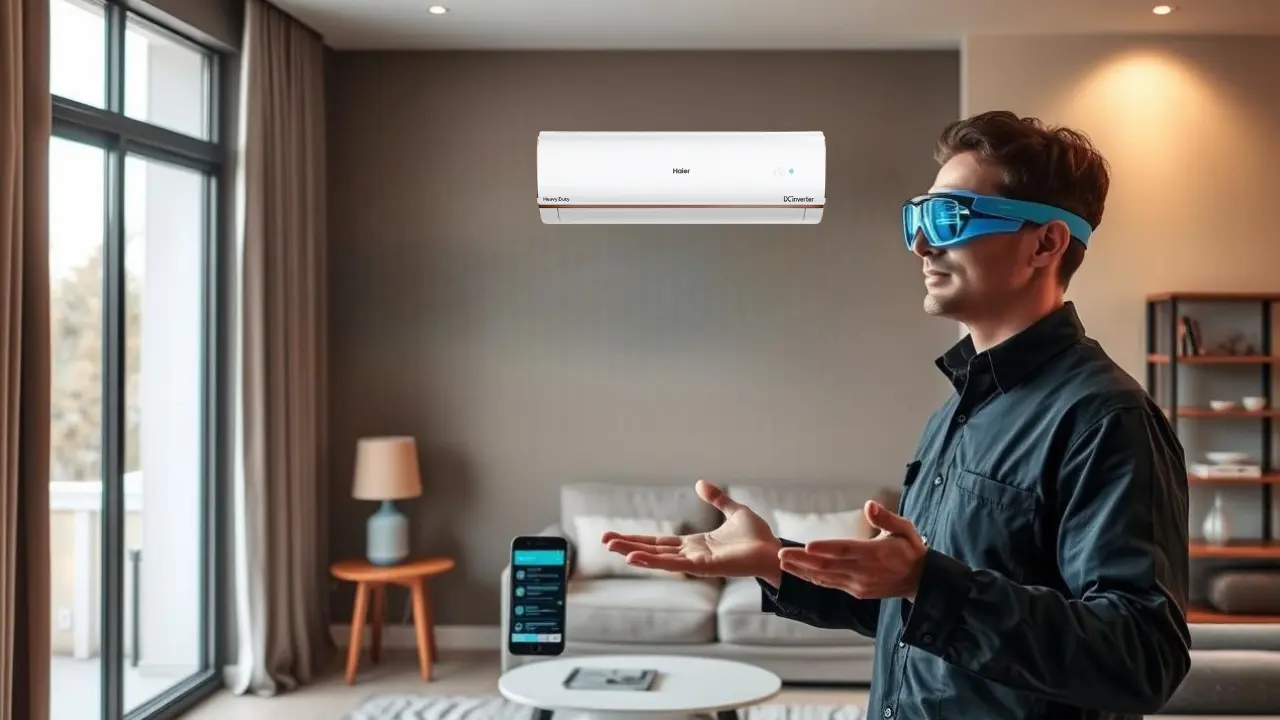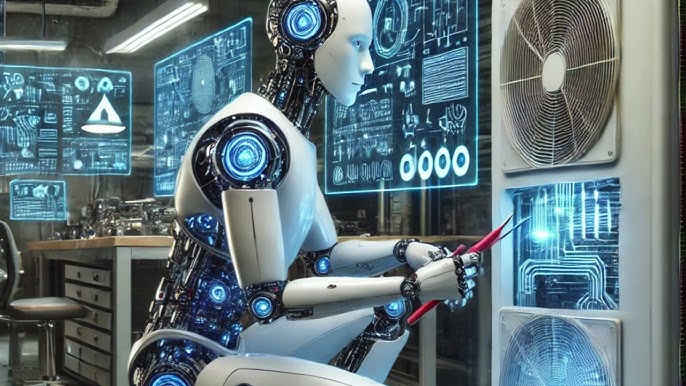In today’s fast-paced world, ensuring optimal comfort and maintaining energy efficiency in buildings is crucial. Thanks to advancements in technology, AI-powered HVAC monitoring systems are transforming how we manage heating, ventilation, and air conditioning (HVAC) systems. By integrating artificial intelligence (AI) with HVAC systems, we are witnessing a revolution in comfort and efficiency.

What Are AI-Powered HVAC Monitoring Systems?
AI-powered HVAC monitoring systems are state-of-the-art solutions that utilize artificial intelligence to optimize the performance and efficiency of HVAC systems. These systems analyze vast amounts of data collected from various sensors, enabling them to make real-time adjustments and predictions to maintain a comfortable environment. This technology not only ensures optimal indoor climate control but also reduces energy consumption and operational costs.
The Role of AI in HVAC Systems
AI plays a pivotal role in enhancing the capabilities of HVAC systems. Through advanced algorithms, AI can process and analyze data from multiple sources, including weather forecasts, occupancy patterns, and sensor readings. This data-driven approach allows AI to make informed decisions, resulting in improved energy efficiency and reduced environmental impact.
Benefits of AI-Powered HVAC Monitoring Systems
- Energy Efficiency: By optimizing energy usage, these systems help reduce electricity bills and minimize carbon footprints.
- Predictive Maintenance: AI can identify potential issues before they escalate, preventing costly repairs and downtime.
- Enhanced Comfort: AI ensures consistent indoor temperatures, humidity levels, and air quality for maximum comfort.
- Cost Savings: By reducing energy consumption and maintenance costs, businesses and homeowners can enjoy significant savings.
How AI Transforms HVAC Systems
The integration of AI in HVAC systems brings about significant transformations, enabling smarter and more efficient operations. Here are some ways AI is revolutionizing HVAC systems:
1. Intelligent Control Systems
AI-powered control systems continuously learn from historical data and real-time inputs to optimize HVAC operations. By analyzing patterns and trends, these systems can anticipate changes in demand and adjust settings accordingly, ensuring energy efficiency and comfort.
2. Predictive Maintenance
With AI, HVAC systems can predict maintenance needs and schedule repairs proactively. By monitoring equipment performance and identifying anomalies, AI can detect potential failures before they occur, reducing downtime and extending the lifespan of the equipment.
3. Adaptive and Personalized Comfort
AI-powered HVAC systems can adapt to individual preferences and occupancy patterns, providing personalized comfort. By considering factors such as room occupancy, time of day, and user preferences, these systems can adjust temperature, airflow, and humidity levels to create an optimal indoor environment.
Implementing AI-Powered HVAC Monitoring Systems
Implementing AI-powered HVAC monitoring systems requires careful planning and consideration. Here are the key steps involved:
1. Assessment and Planning
Begin by assessing the existing HVAC infrastructure and identifying areas that can benefit from AI integration. Collaborate with experts to develop a comprehensive plan tailored to your specific needs.
2. Sensor Installation and Data Collection
Install sensors and devices that collect relevant data, such as temperature, humidity, occupancy, and energy consumption. This data serves as the foundation for AI algorithms to analyze and optimize HVAC operations.
3. Data Analysis and Algorithm Development
Utilize data analytics tools to process and analyze the collected data. Develop AI algorithms that leverage this information to make intelligent decisions and optimize HVAC performance.
4. System Integration and Testing
Integrate the AI-powered monitoring system with the existing HVAC infrastructure. Conduct thorough testing to ensure seamless operation and identify any potential issues that need to be addressed.
5. Continuous Monitoring and Optimization
Regularly monitor the performance of the AI-powered HVAC system and make necessary adjustments for optimal efficiency. Leverage insights from the system to identify further opportunities for improvement.
The Future of AI-Powered HVAC Monitoring Systems
As technology continues to advance, the future of AI-powered HVAC monitoring systems looks promising. Here are some developments to look forward to:
1. Enhanced Energy Efficiency
AI algorithms will become even more sophisticated, allowing for more precise energy optimization and further reducing energy consumption.
2. Integration with Smart Building Technologies
AI-powered HVAC systems will seamlessly integrate with other smart building technologies, creating a fully interconnected and automated environment.
3. Improved Indoor Air Quality
AI will play a vital role in monitoring and improving indoor air quality by detecting and eliminating pollutants and allergens.

FAQs
1. How do AI-powered HVAC monitoring systems work?
AI-powered HVAC monitoring systems utilize artificial intelligence to analyze data from sensors and make real-time adjustments to optimize HVAC performance.
2. Can AI-powered HVAC systems save energy?
Yes, AI-powered HVAC systems can significantly reduce energy consumption by optimizing settings and predicting demand patterns.
3. Are AI-powered HVAC systems cost-effective?
While the initial investment may be higher, AI-powered HVAC systems offer long-term cost savings through reduced energy consumption and maintenance costs.
For more information on how AI is transforming the HVAC industry, visit this link.
This article contains affiliate links. We may earn a commission at no extra cost to you.
